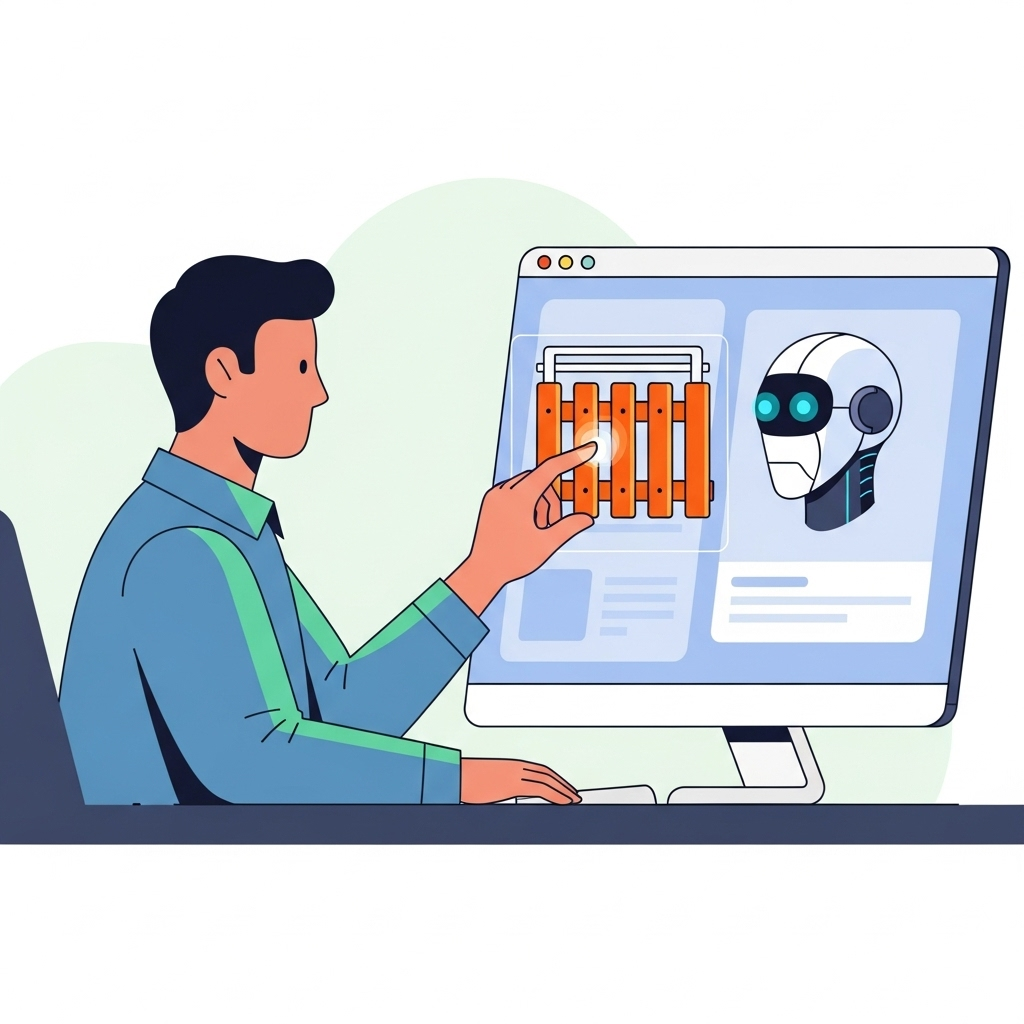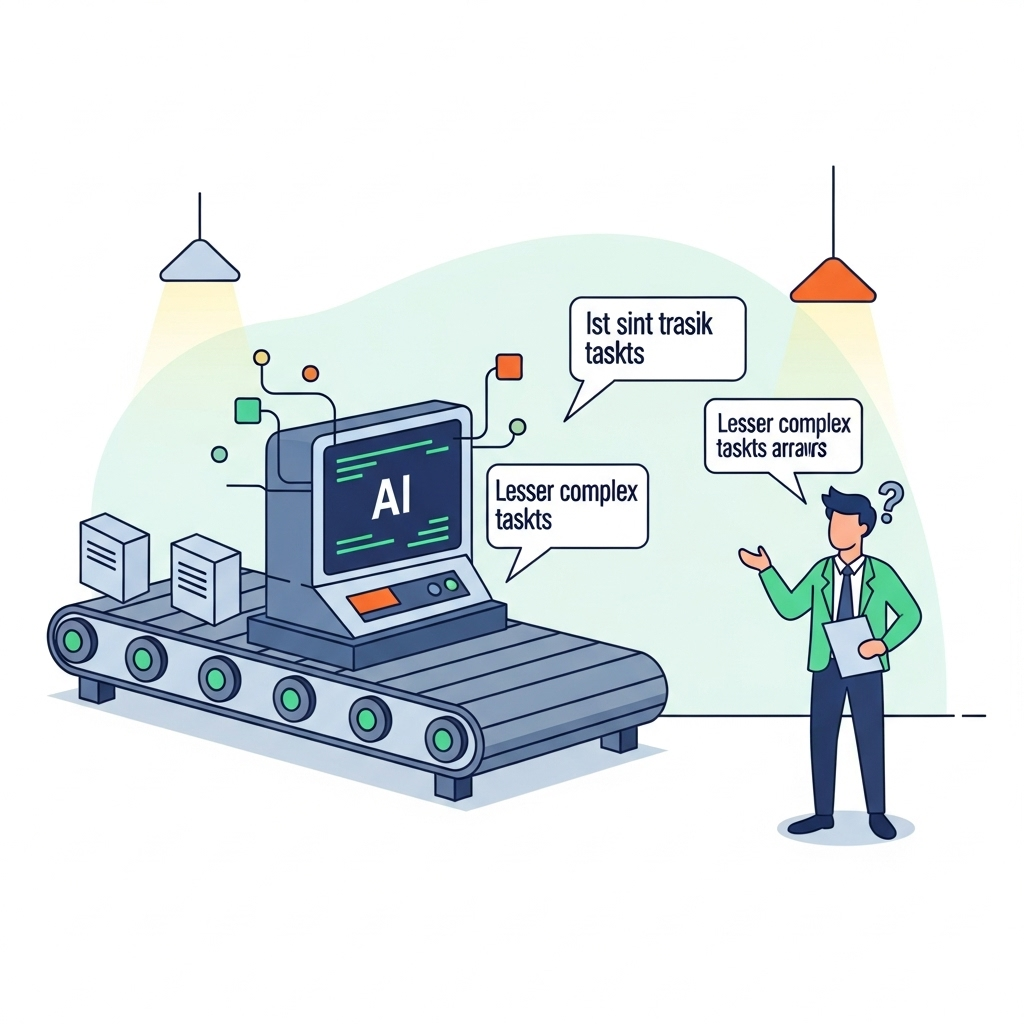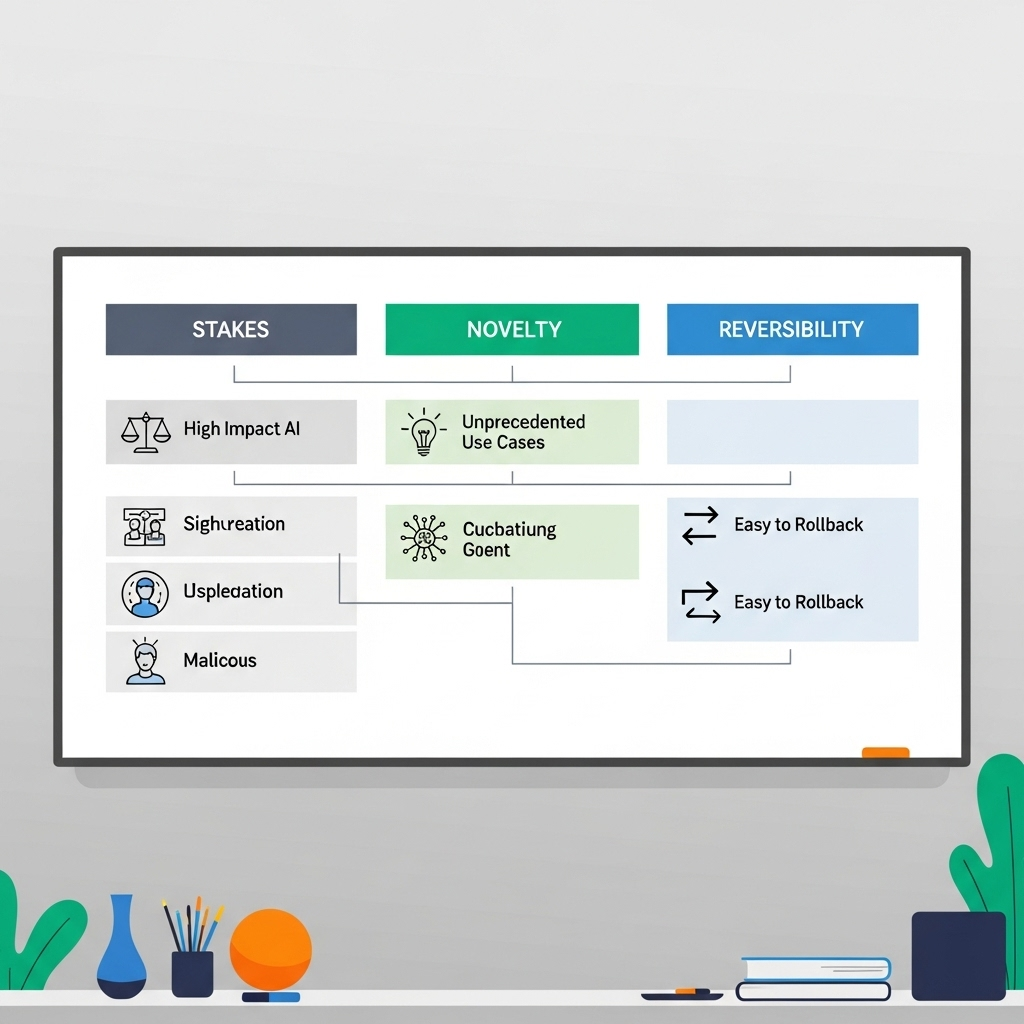The Cognitive Boundary Movement

If you tour enough offices (real or virtual), you start noticing the first real pushback against workplace AI. It isn’t a manifesto; it’s a set of boundaries.

People aren't abandoning the tools; they're reassigning them. AI is used to build cognitive fences instead of erasing mental effort. This feels like the early shape of a movement without a slogan, just a shared sense that the more we outsource thinking, the harder it becomes to tell when we should trust our own judgment.
Here's what the research actually shows: the findings are usually nuanced rather than absolute. Most studies emphasize that results depend on context, measurement choices, and how questions are framed. When you step back, the evidence points to modest effects in many situations, with stronger results in specific settings and mixed or null findings in others. In short, there are real signals, but they come with uncertainties and trade-offs that policymakers and practitioners need to weigh carefully.
These patterns aren’t just speculation. Across studies that summarize AI’s effects on thinking, researchers consistently find a noticeable link between heavy AI use and lower scores on measures of critical thinking. The idea is that people offload more cognitive tasks to machines, and that offloading appears to mediate part of the decline. One widely cited study reports a strong inverse relationship between cognitive offloading and critical thinking, with AI use correlated with lower critical thinking, especially among younger users, though higher levels of education seem to offer some protection. The effect isn’t strictly linear; there seems to be a tipping point after which engagement with AI drops off sharply. When we hand off more decision making, we practice judgment less and may miss when it’s required. (Sources: IEEE Computer Society, IE Center for Health and Well-being, Phys.org coverage of Gerlich 2025).
Looking at the bigger picture, this isn’t new. The internet already reshaped how we remember things, a phenomenon people call the Google Effect. AI pushes that shift further, moving us from simply remembering to actively reasoning. Delegating memory is one thing; delegating evaluation is another. And that second shift changes the person doing the delegating.
We're building a feedback loop.
AI takes over more routine work, which means fewer opportunities for people to practice analysis. When practice fades, so does our ability to vet AI output. In response, we push more work onto others, because vetting feels slower and harder. The cycle keeps tightening.

Many organizations mistake this for a tooling problem; the real constraint is capacity shaped by the tools themselves. Simply adding more systems that push decision-making further downstream doesn’t restore judgment, and it often removes the moments when people get to think through choices. If judgment is slipping, you don’t fix it by buying gadgets, especially when those gadgets crowd out the need to weigh options in real time.
Where boundary movement tends to show up.
Across our teams, three boundary types are forming. They aren’t strict rules, just the working norms we all share.
Time boundaries matter: we use AI to guard focus windows rather than to fill them. People schedule AI to triage messages during blocked periods, batch small tasks for off-hours, and push back non-urgent prompts until after deep work sessions. A little friction is introduced on purpose, so attention can accumulate more intentionally.
Attention boundaries redefine what gets through. Teams filter for source quality rather than volume. They train the models to summarize only after they’ve sampled the primary material themselves. The tool serves as a compression layer, not a substitute for the original material.
3) Epistemic boundaries: these are the lines that define what must be understood before anything is automated. More and more contributors are choosing not to outsource the initial thinking on new, high-stakes, or irreversible tasks. They rely on AI as a second reader rather than as the first writer.
Honestly, this doesn't feel heroic. It comes off as people picking where their brain should be tired when the day ends.
Behind resistance, you often find a web of small concerns that don’t line up with the surface message. People worry about losing control, about hidden costs, and about mismatches between promises and practice. The pattern isn’t a single mood but a fluctuating rhythm: skepticism surfaces when priorities shift, then eases as people see steady progress and clear ownership. Change stalls where feedback is murky, early wins aren’t obvious, or effort isn’t recognized. Listen for those quieter signals—lingering questions, tentative bets, quick pivots—and you’ll see a map of resistance that points to real, actionable work.
Friction is now being seen as a feature. A brief pause before we trust machine output isn’t laziness; it’s quality control born of our own self-preservation. Trust is becoming conditional. People are distinguishing between accuracy on clear problems and reliability when the path isn’t certain, and they adjust how they rely on AI accordingly. Capability is defined as judgment under uncertainty. The question quietly reshaping hiring and promotion conversations is simple: whose conclusions still stand when the usual template breaks.

Organizations today operate in a landscape where information travels fast and decisions must be grounded in clarity. Even small shifts in how we present ideas can change how teams collaborate, how customers trust us, and how regulators view our practices. When communication feels authentic and direct, teams understand priorities, act more quickly, and make fewer missteps. In short, the way we convey messages can shape outcomes as much as the content itself. To stay ahead, we need a balance of practical detail and human nuance, offering usable specifics while keeping a sense of real, everyday reasoning.
Productivity numbers can be deceptive; chasing throughput alone tempts you to automate too much, only to realize later that you lack the judgment needed for rare failures, edge cases, or reputational risk. Training must adapt as well—teaching people when to rely on automation is as important as teaching them how to use it. Policy should focus on categories rather than tools: classify work by stakes, novelty, and reversibility, then set default offloading rules by category and make exceptions explicit. And culture is the enforcement layer: if the stories we celebrate prize speed, we won’t get the careful thinking that matters when it truly counts.
AI minimalism is about using artificial intelligence in a way that clears clutter rather than multiplies it. It asks which smart tools genuinely save time and mental energy, favors clear boundaries, simple automations, and transparent results. Digital minimalism, by contrast, is a broader lifestyle choice: trimming needless apps, limiting screen time, and designing your digital world for focus and quiet. Both share a common aim of reducing distraction, but they approach it from different angles. With AI minimalism, the focus is on interactions with intelligent systems: do these tools improve outcomes without creating new habits that pull attention away? With digital minimalism, the emphasis is on what you allow into your life overall: notifications, feeds, and the constant churn of streams. In practice, adopting AI minimalism might mean using a single, reliable assistant for routine tasks and turning off optional features; it can also mean setting guardrails so the AI doesn't prompt unnecessary actions. Digital minimalism might look like a curated device lineup, scheduled app usage, and time blocks that protect real-world activities. The two can complement each other, but they require different decisions at the design and daily-use levels.
Digital minimalism trims the noise from our online world, reducing how much we engage with platforms. AI minimalism helps us avoid overreliance on automated inferences. This isn’t about ditching technology; it’s about drawing clear boundaries around what we’re willing to outsource and what we want to handle ourselves.
Here's a straightforward framework you can try out and see how it performs.
PASSAGE

- Stakes: What happens if this goes wrong, and who would be affected.
- Novelty: How familiar this pattern is to you and to the model.
- Reversibility: How easy it would be to unwind if needed.
For high-stakes, highly novel, and hard-to-reverse tasks, we should rely on human first-pass thinking. Medium-stakes or reversible tasks can use AI as a draft or benchmark. Low-stakes, routine work that’s easy to reverse can be automated, with occasional spot checks. This framework is descriptive, not prescriptive; it’s meant to illuminate where current practices diverge from the actual risk surface.
There are second-order effects to monitor as this unfolds.
Judgment is no longer a vague trait; it's something teams name, measure, and refine. Decision logs and lists of assumptions become normal artifacts, creating institutional memory that lives beyond chat histories. Vendors' claims lose ground as buyers demand verifiable features, clear traceability, and built-in pause points; friction becomes a signal of quality rather than a defect. Career paths tilt toward people who can hold complex context and resist closing too early; their output may be slower at first, but the rate of rework drops. Governance also shifts from abstract AI ethics principles to practical, enforceable norms: no single-step automation on high-stakes workflows, mandatory human backstops at predefined decision gates, and a cautious, benchmark-driven approach to ambiguous use cases.
Not everything worth admiring should be glossed over with romance. The hardships people face, like late shifts, unpaid bills, or the quiet fatigue of daily effort, deserve honesty, not bravado. The courage we celebrate when someone powers through a tough day loses its warmth when we pretend the cost is invisible. Poverty, abuse, and burnout aren’t cinematic backdrops for a clever story; they are real conditions with real consequences. When we romanticize risk or survival without naming the harm, we steal a sense of agency from the people who live it. Better to name the strain and show the messy rhythm of life, with the missteps, the fatigue, and the small acts of care that keep people going. If we lean into myth, let it be about resilience that rests on accountability, support, and real-world consequences, not hype.
Doing everything by hand doesn’t make you purer. The aim isn’t to resurrect some analog era. It’s about keeping the human elements that keep tools safe and practical: the focus that sustains depth, the judgment that can resist flattery, and the knack for spotting when a conclusion looks too tidy for the messy reality we actually live in.
There is a counterargument worth hearing, one that invites careful listening rather than quick dismissal. It challenges assumptions, clarifies stakes, and, in doing so, helps us refine our position. By examining this alternative view, we can strengthen our case or adjust our stance in meaningful ways.
Some people argue that as AI improves and starts outperforming human critical thinking on important tasks, the decline of those skills won’t matter. If the model can think better, why protect human stamina at all? It’s a fair question, and the research hasn’t provided a definitive answer. What the current evidence shows is a real, immediate cost: heavy offloading reduces our ability to judge outputs in real time, and in the near term we still need to evaluate what’s produced. Until results are reliably error free, oversight remains a practical capability, not a sentiment. (Sources: IEEE Computer Society, IE Center for Health and Well-being, Phys.org coverage of Gerlich 2025).
At the practical center, ideas turn into usable solutions; theory meets the day-to-day realities of work. This is where experiments translate into workable results and plans move from the drawing board into the field.
Putting cognitive boundaries in place isn’t a fad. It’s a sensible response to a system that chases speed while offloading the costs of sloppy judgment. People are drawing lines because they want to keep the option to cross them when it matters. Organizations that really understand this will stop asking how to get everyone using more AI and start asking where human attention adds the most value.
People are noticing that AI tools make it easier to offload memory and routine reasoning, which sounds convenient until we realize what gets left behind. When we rely on smart assistants to remember dates, solve simple problems, or organize information, our own ability to recall, reason, and stay flexible can weaken over time. Researchers point to a shift in thinking skills rather than a net gain in cognitive capability: we save time, but we might pay a hidden price in critical thinking, problem framing, and mental agility. The challenge is to strike a balance; use AI to handle the heavy lifting while actively engaging with ideas, check assumptions, and practice core skills in real life.

Comments ()